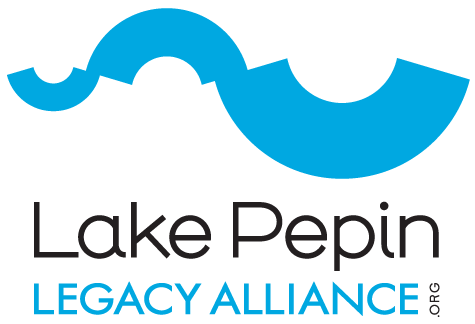BY MICHAEL ANDERSON
Lake Pepin Legacy Alliance
The Mississippi River is more than a scenic backdrop for our communities — it’s the artery that connects our past, present, and future.
At the heart of this river lies Lake Pepin, a natural widening of the river on the Minnesota and Wisconsin border that supports fishing, boating, tourism, and wildlife. But today, this vital resource is being buried alive — with recent years seeing over 1 million tons of sediment deposited annually, steadily filling in the lake.
That’s not a typo. Sediment is flowing into the lake at 10 times the rate it did before European settlement. Much of that sediment comes from the Minnesota River Basin, which contributes up to 88% of the sediment entering the south metro Mississippi River and Lake Pepin.
Why the sediment surge?
There are two major forces at work. First, increased rainfall and more frequent intense storms are sending more water into our rivers. Second, decades of draining wetlands and prairies for agriculture have created an artificial drainage network across southern Minnesota. These systems — ditches and tile drains — rapidly send runoff into creeks and rivers, increasing stream flow, eroding land, and delivering vast loads of sediment to Lake Pepin.
From 2016 to 2019, sediment loads from the Minnesota River averaged over 1 million metric tons annually, the highest in nearly 50 years of monitoring. That sediment clouds the water, chokes out aquatic vegetation, and carries phosphorus that fuels algae blooms — though monitoring shows improved water clarity in recent low-flow years. Phosphorus levels in Lake Pepin routinely exceed the state’s standard, and in 2021, algae levels spiked to twice the recommended limit, coating parts of the lake in green mats and threatening fish and recreation.
And yet — there’s reason for hope.
The same report shows that chlorophyll-a, the measure of algae growth, is often within target levels. Even more encouraging: Submersed aquatic plants — like wild celery and water stargrass — are rebounding. In upper Pool 4 near Bay City and Wacouta Bay, vegetation is present at 30% to 60% of monitored sites, helping stabilize sediment, absorb nutrients, and provide habitat.
These gains aren’t happening by accident. Phosphorus from wastewater has been reduced by 67% statewide since the early 2000s. New projects funded through the Army Corps of Engineers and state agencies — like the $22 million island-building effort in upper Lake Pepin — are physically reshaping the landscape to restore habitat and reduce erosion.
Equally important is what’s happening upstream on the land.
Farmers have eliminated most surface tile intakes, adopted conservation tillage on about half of cultivated acres, and planted stream buffers — practices that help in years with normal precipitation. Additional practices, such as no-till planting, cover crops, perennial crops, and water and sediment control basins are needed for higher rainfall years. Together, these practices help slow down and hold water on the land, reducing erosion and cutting the peak flows that tear apart riverbanks downstream. In targeted areas, these so-called “treatment trains” can reduce peak flows by 85–95% during storms — all while keeping farmland productive.
But make no mistake: We’re not out of the woods.
Without a 50% to 60% sediment reduction from the Minnesota River, the lake’s long-term survival is in jeopardy. Observers already see the effects — popular boating areas are becoming harder to access. If current trends continue, the lake could be filled in just 350 years — a sharp decline from its projected 4,000-year natural lifespan.
So what now?
We need to invest in what works. That means erosion control in high-risk areas, support for landowners using practices like cover crops and water and sediment control basins, and continued backwater restoration upstream. Projects near La Crosse, Wisconsin, have already cut sediment concentrations by up to 75% in restored areas. We also need monitoring and civic engagement to ensure long-term accountability.
This isn’t just about the environment — it’s about protecting our economy, communities, and the future of the river. Lake Pepin supports tourism, fishing, boating, and property values throughout the region. Its health is linked to the health of the entire Upper Mississippi River.
The science is clear: Lake Pepin can recover — but only if we act. The sediment is not going to stop on its own.
Lake Pepin has waited long enough. Let’s give it the future it deserves.
Michael Anderson is the executive director of Lake Pepin Legacy Alliance, a Minnesota nonprofit advocating for the protection of Lake Pepin.
